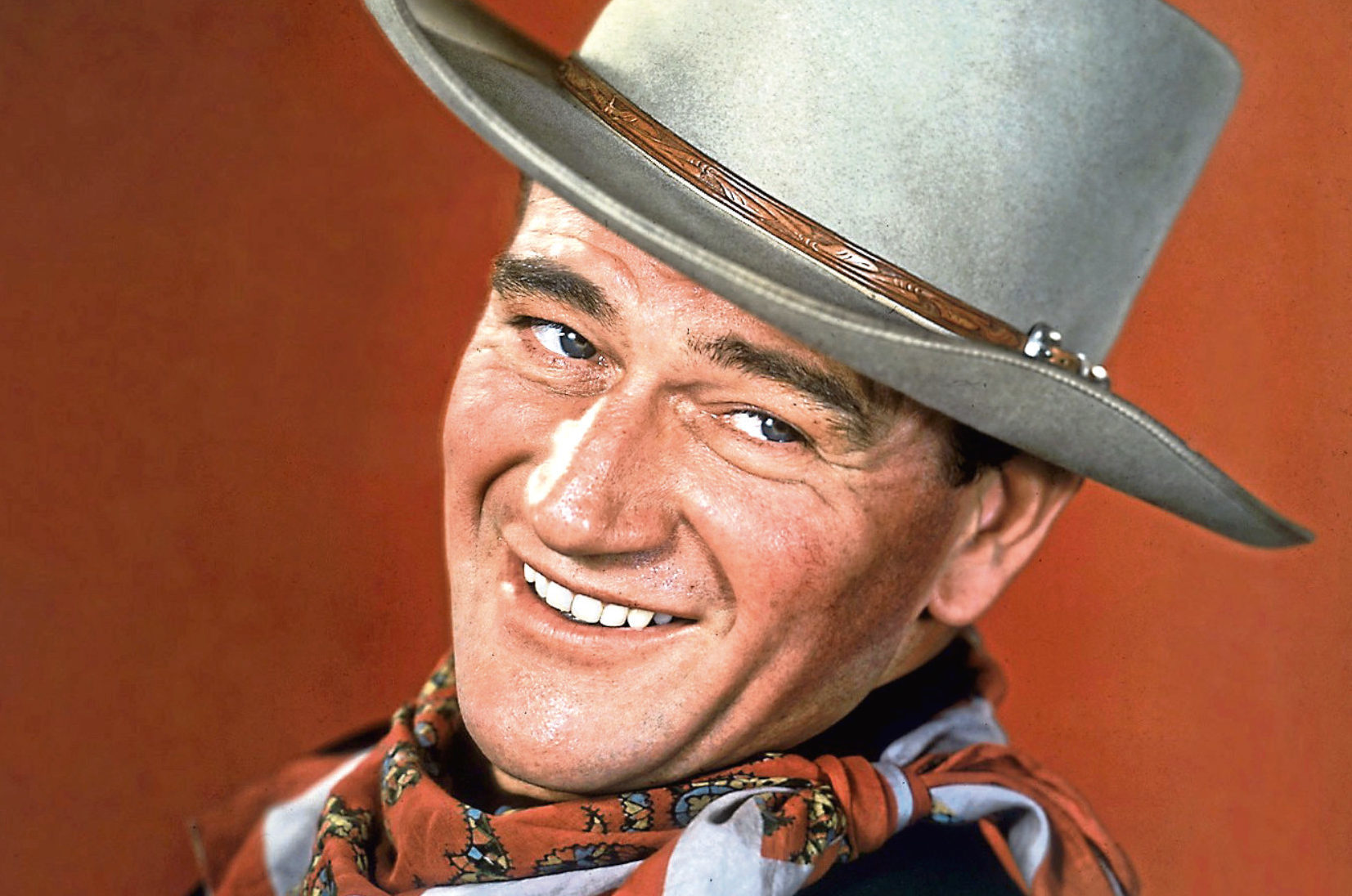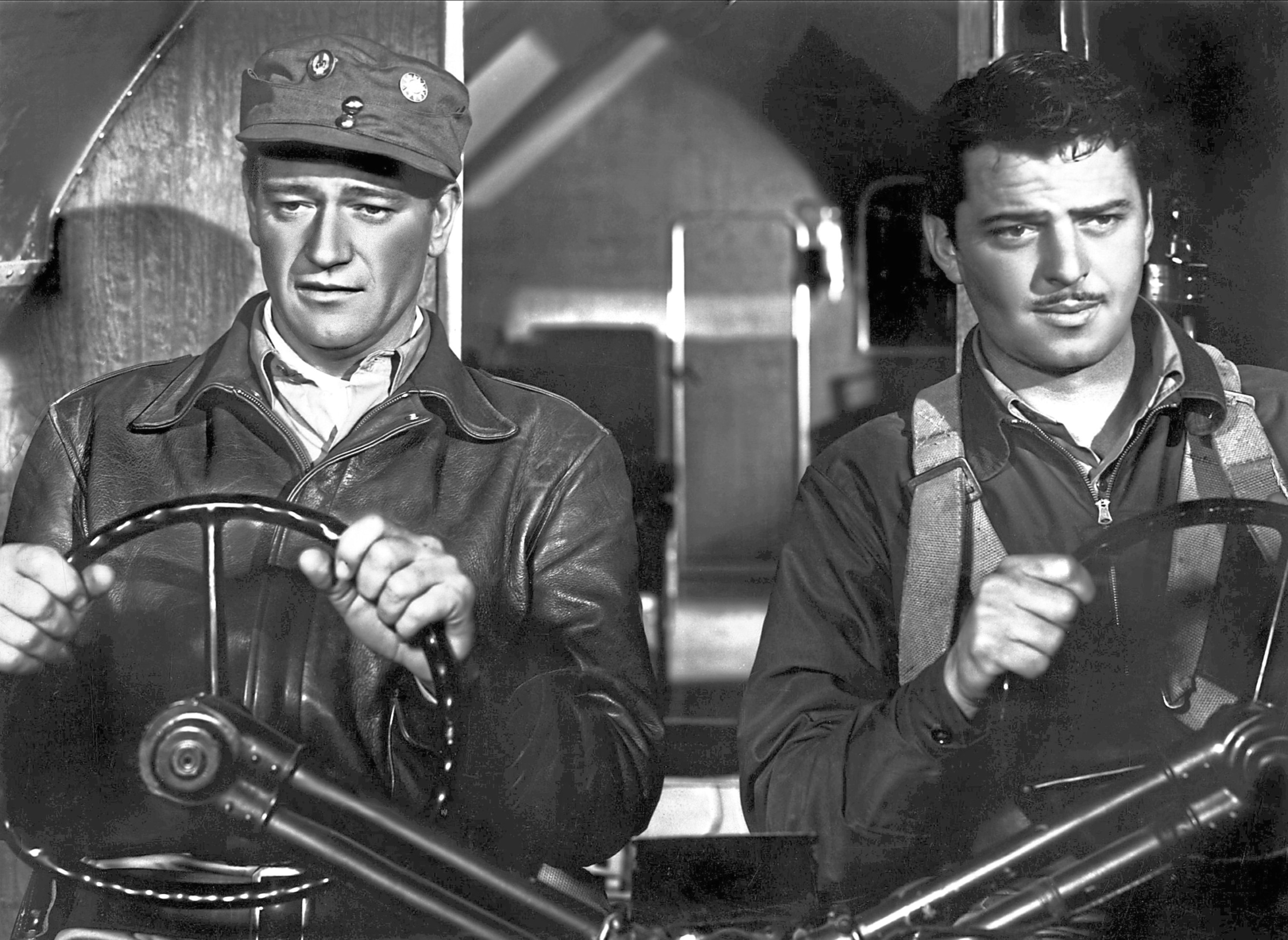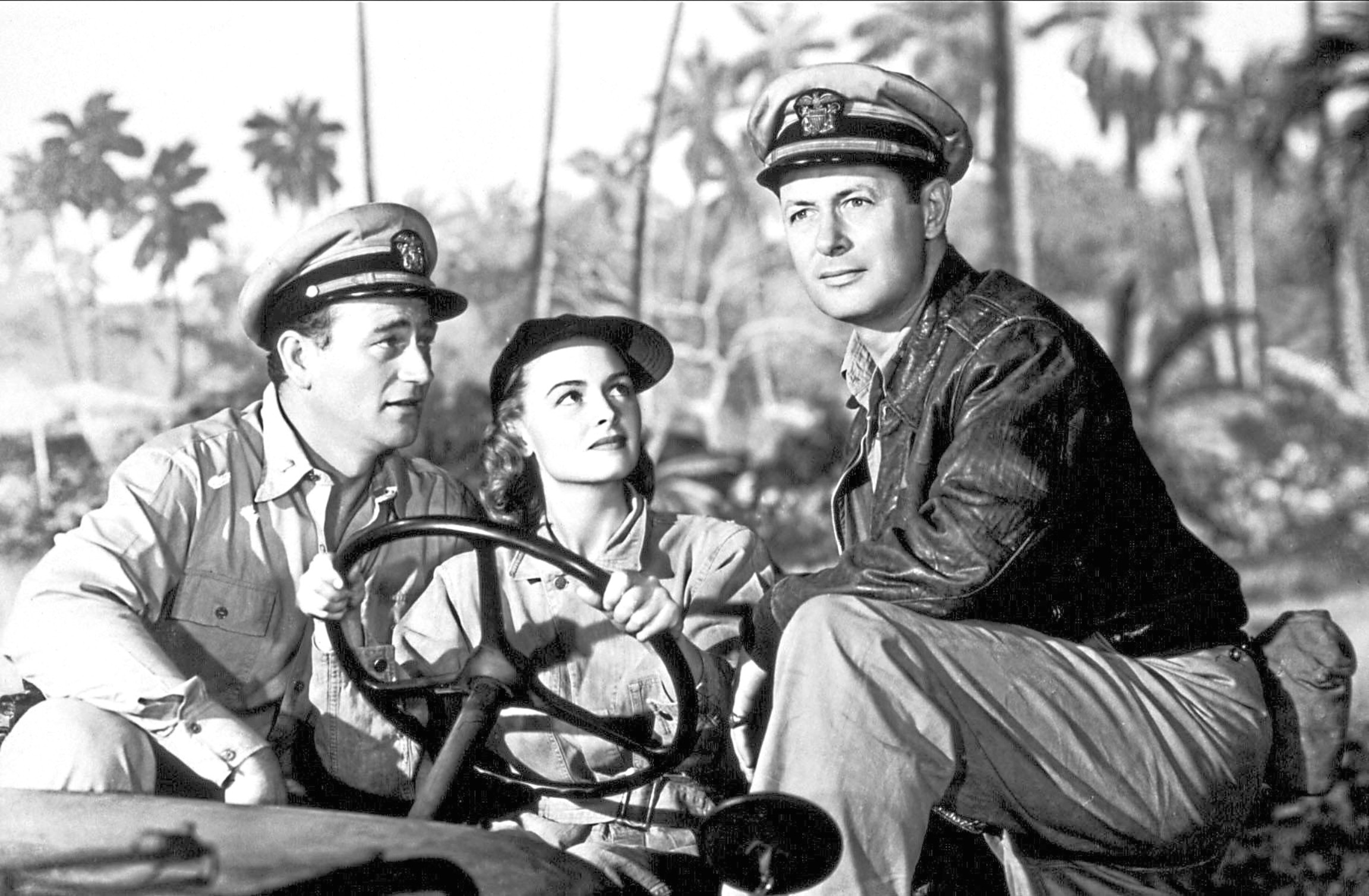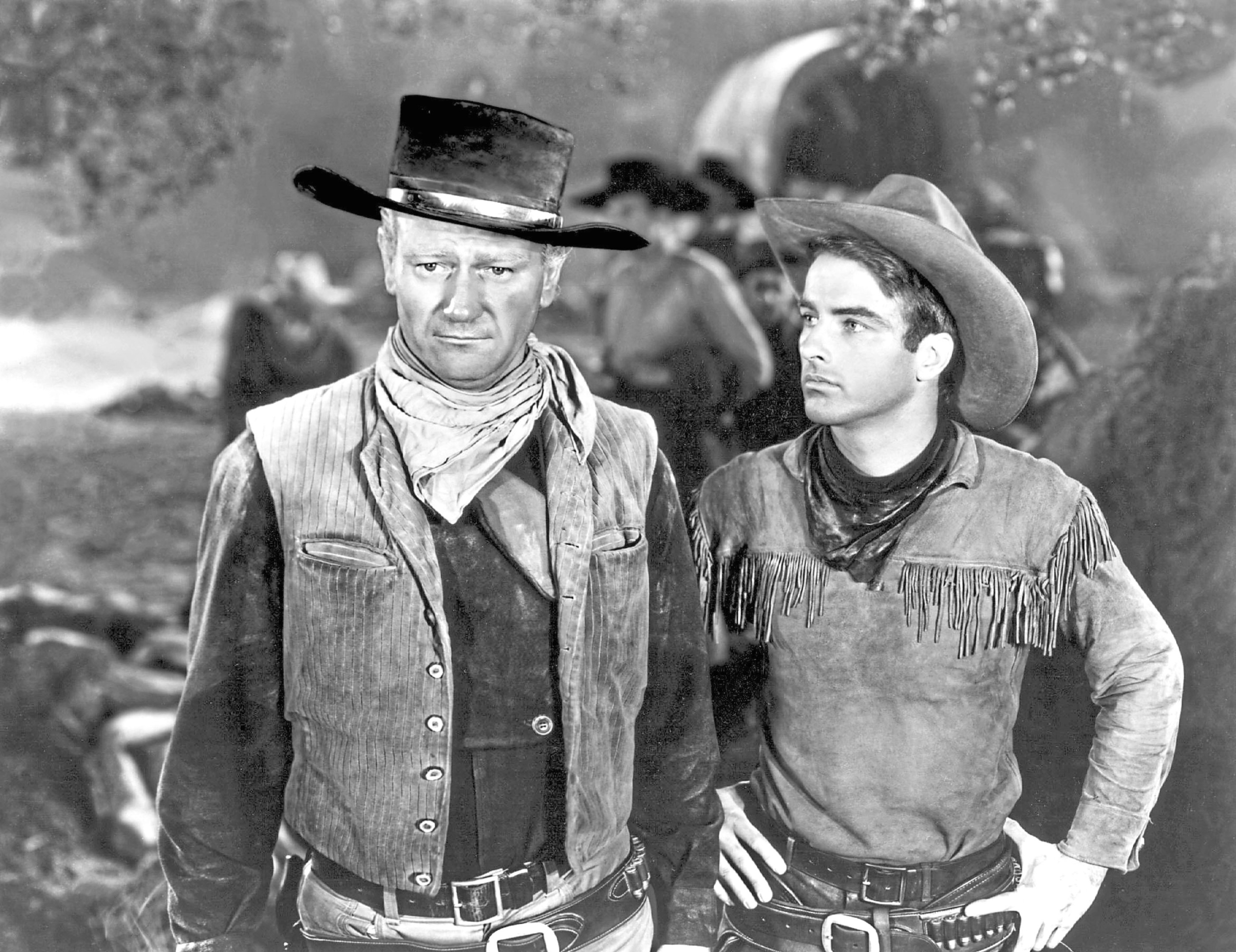
JOHN WAYNE went to war in 1942 and soon found being a soldier on the big screen suited him just as well as being a cowboy.
The Duke played Jim Gordon, leader of a squadron of American freelance pilots in Flying Tigers, in which he takes them into aerial battles with Japanese fighters in the skies over China.
Some of his men are in it for the glory, others for the money, and they receive a bounty for every plane shot down.
When former airline pilot Woody Jason joins up, trouble ensues as his arrogance causes bad feeling within the group.
He’s such a hothead, in fact, that during a surprise Japanese attack he takes off without permission only to realise he has got himself into the air without any ammunition. Shot down, his plane wrecked but surviving, he then proceeds to try to seduce Jim’s girlfriend. Not a good idea.
It was a cracking start to Wayne’s war movies, a wonderful plus for the US propaganda people and a big hit with the patriotic cinema-going public. It did wonders for Wayne’s reputation and fame.
His next big war film would be two years later in The Fighting Seabees, with Republic Pictures’ biggest budget up to that point.
The Seabees got their name from CB – Construction Battalion – elite groups of soldiers who were skilled construction workers but trained to use guns and other weapons to see off any enemy attacks.
They first came into being after Pearl Harbor. Before that, the United States had about 70,000 civilians working on military buildings, bridges, towers and other installations but laws made it illegal for them to resist any attack. This, according to the international rules, would have made them guerrillas but after Pearl Harbor staff had to be ready to defend their work and themselves.
It was a fascinating, unusual part of the armed forces and a most welcome role for Wayne.
He played Lt Commander Wedge Donovan, building airstrips in the Pacific and at odds with his boss because he won’t allow the workers to have guns.
When the Japanese land, he takes matters into his own hands – alas, the way he does it leads to many of his men being killed, leading to the formation of the Seabees.
It’s another of those Wayne movies where our hero gets killed in the end but it’s a fine film and there aren’t many where burning bulldozers take on the Japanese army and win.
Once again, the public loved it, especially Wayne, and it was also another great blow for the propaganda top brass – if Wayne couldn’t get his way and actually be in the US Army, he made his mark in his own way, and it proved valuable, too.
In the 1940s, Wayne also embarked upon a six-movie deal with RKO, starting with A Lady Takes A Chance – a light romantic comedy – and Tall In The Saddle, which critics said would have otherwise been a run-of-the-mill western if it wasn’t for the way he carried it almost by himself.
Even this relatively early, Wayne’s presence could more than make up for the occasional weak storyline – a big man, he literally filled the screen.
It was with Metro-Goldwyn-Mayer, however, he had one of his most notable hits during the Second World War.
They Were Expendable received two Academy Award nominations and was voted one of the best 10 movies of 1945, and much of its success was down to the perfectionist team who worked on it.
John Ford, although always Wayne’s biggest fan, was apparently very hard on him during it, although the producer got a bit quieter after he fell off scaffolding during filming and broke a leg.
They got the actual Navy in to keep things realistic and authentic, and many remarked on its attention to detail.
It’s based on the Motor Torpedo Boat Squadron defending the Philippines against Japanese invasion and was based on a book that, in turn, was based on real events and people.
Wayne and Ford may have had that western magic formula but one of the Duke’s great westerns was done with Howard Hawks producing and directing, and Montgomery Clift co-starring.
This 1948 flick, Red River, was built around the first cattle drive from Texas to Kansas, with the tension between Wayne’s Thomas Dunson, the rancher who started the drive, and his adopted son Matt Garth, played by Clift.
Selected for preservation by the Library of Congress in the US National Film Registry, for being “culturally, historically or aesthetically significant”, it showed Wayne in a new light.
His acting was amazing and even Ford, so used to working with him, said: “I didn’t know the son of a b**** could act!”
Ford was back in the directing/producing saddle for Fort Apache the same year, when Wayne showed his acting talents alongside Henry Fonda and the 20-year-old Shirley Temple.
He was, in fact, offered potentially another cracker in ’49, All The King’s Men, but Wayne turned it down, reckoning the script was un-American in several ways. Broderick Crawford, who had no such worries and took the job, clinched a best actor Oscar.
The man he beat to the top award? John Wayne for Sands Of Iwo Jima.
Not that the Duke would have been overly concerned, satisfied as he was with his own brilliant flick. Sands Of Iwo Jima, after all, is still a much-loved American classic.
Wayne was Sgt John M Stryker, leading a band of Marines from their training all the way to the Battle of Iwo Jima. His men hate him for his harsh methods but come to appreciate his teaching in the heat of battle.
Although his men get to see the now-iconic raising of the American flag, Stryker gets killed. As we know, there were no perfect, soppy endings with the hero still alive for Wayne.
Sands Of Iwo Jima was quite a leap for Wayne, just months after another classic western – She Wore A Yellow Ribbon.
It won the Academy Award for best cinematography in colour and it was another vintage Wayne performance, with Ford once more at the helm.
Shot in Monument Valley using parts of a Navajo reservation, it certainly looked the part, with Wayne portraying Captain Nathan Brittles.
He is all set to retire but given one last mission to stop a reservation break-out by the Cheyenne and Arapaho following Custer’s defeat at Little Big Horn.
Brittles is also trying to juggle getting his commander’s female relatives to safety while avoiding an all-out war with the Indians.
With its success, it seems astonishing now to think Ford was unsure who to cast in the lead role – he feared Wayne was not going to be able to play a man 20 years older than he was at that point.
Ford had, of course, been stunned by Wayne’s great acting in Red River and it was this that persuaded him perhaps he could do the job.
When shooting was done, Ford gave Wayne a cake bearing the message: “You’re an actor now.”
Wayne was understandably thrilled with the movie, saying it was one of his favourites and that, rather than Sands Of Iwo Jima, he should have got a best actor Academy Award for She Wore A Yellow Ribbon.
The ideal foil for Wayne would now appear in the shape of a feisty Irish redhead – Maureen O’Hara would create unforgettable on-screen chemistry with the Duke in five movies, starting with Rio Grande in 1950.
He played a cavalry colonel, shocked when his teenage son, who he hasn’t seen in years, turns up as part of his latest batch of raw recruits.
Even worse, his estranged wife, played by O’Hara, then shows up, too, intent on taking her son home with her.
It’s a delightfully complicated family tale, focusing more on the human interest side of the relationships than merely the battles with Apaches and other politicians, and it gave Wayne yet another huge hit.
It also showed amazing chemistry between its male and female leads.
The Quiet Man, 1952’s meeting of Wayne and O’Hara, showed that all over again.
Unlike almost any other Wayne movie, this wonderful tale of a Pittsburgh man going back to Ireland to reclaim his family’s farm looks better with each repeat.
Sean Thornton, Wayne’s character, was a boxer in America but hung up his gloves after killing an opponent.
Mary Kate Danaher, O’Hara’s role, is the sister of the local landowner, a bully despised by everyone, who wants the farm for himself.
When Sean falls for Mary, he refuses to give his brotherly consent for a marriage and almost inevitably it leads to fisticuffs. No prizes for guessing who gets whacked hardest.
It was a quantum leap from Ford and Wayne’s usual stuff and was a massive hit.
Ford, who had left Republic Pictures petrified it would flop, was told he had to keep the film at under two hours.
It ran to two hours and nine minutes so when he showed it to bosses he stopped the reel just before the all-important fight and happy ending.
Aghast, they realised that final nine minutes were absolutely needed and let him keep them.
As you’ll see in next week’s third and final part of our John Wayne series, the Duke was now making hit movies in every imaginable style. In the decades to come, he would do even better.

Enjoy the convenience of having The Sunday Post delivered as a digital ePaper straight to your smartphone, tablet or computer.
Subscribe for only £5.49 a month and enjoy all the benefits of the printed paper as a digital replica.
Subscribe

